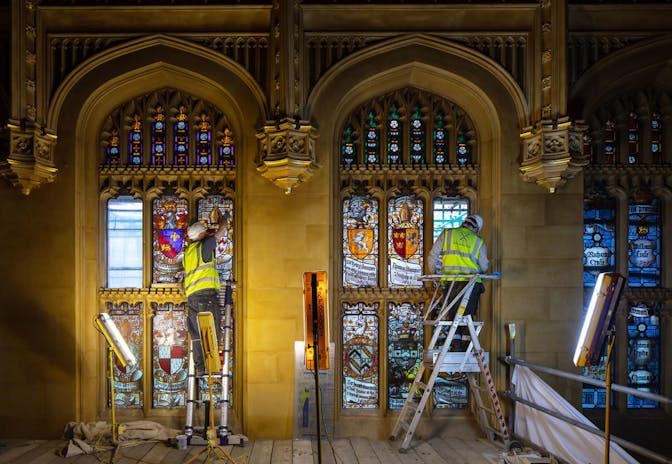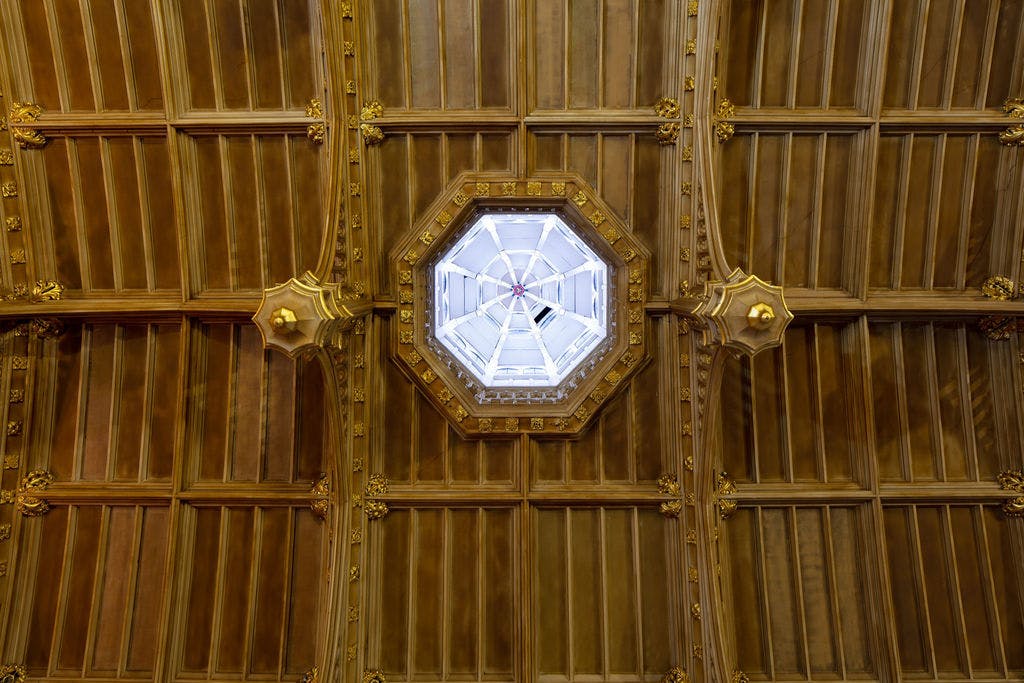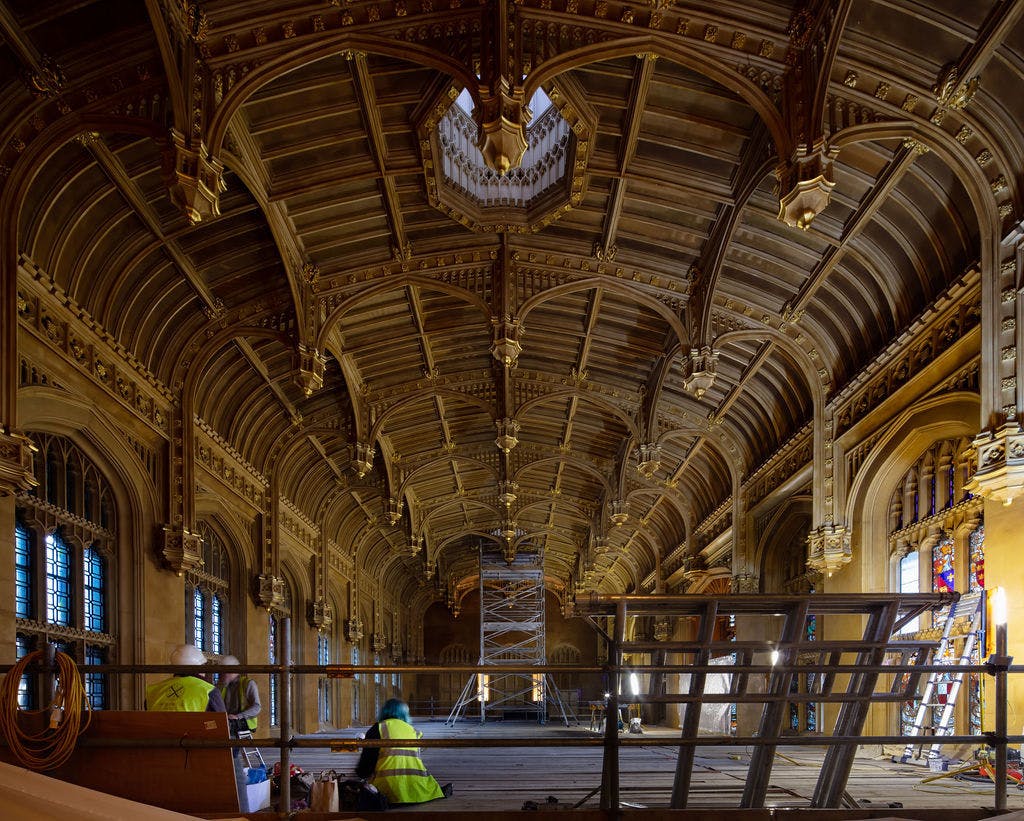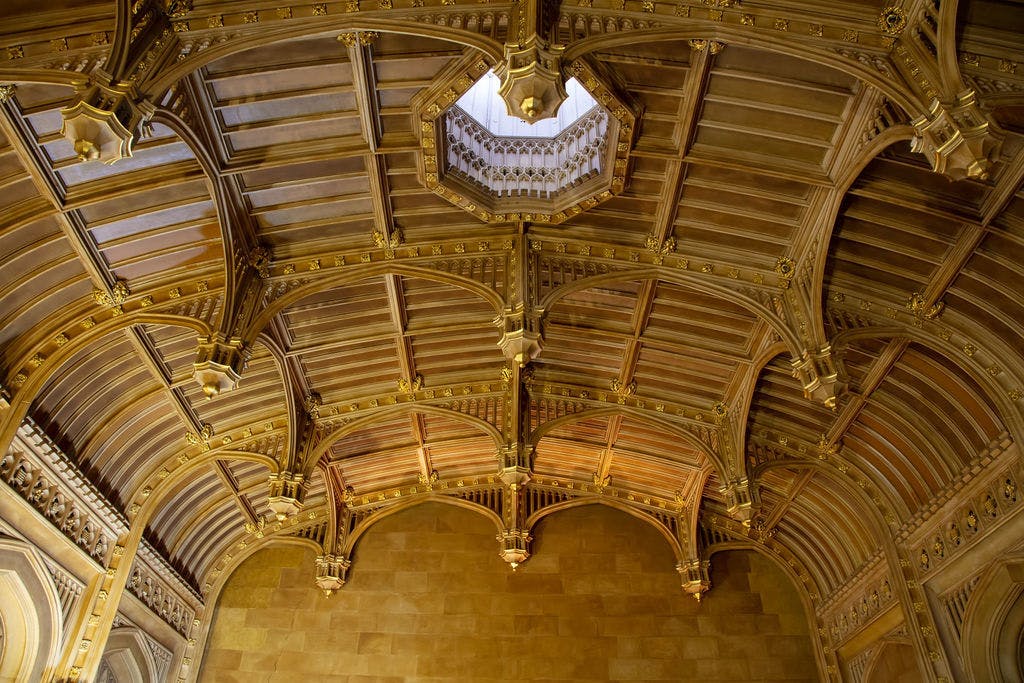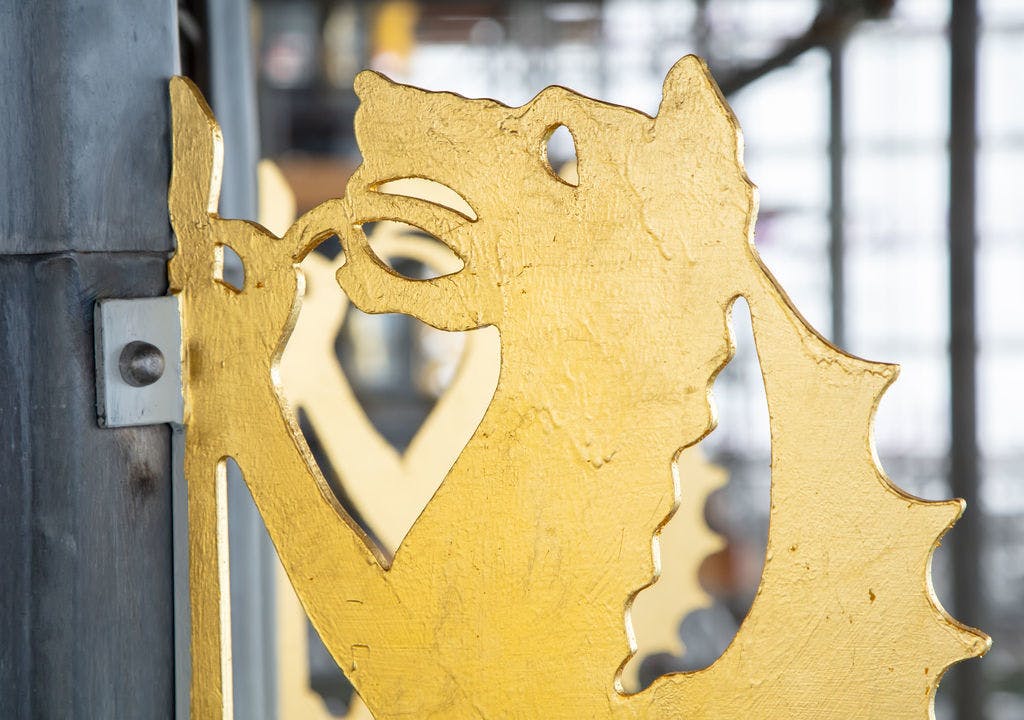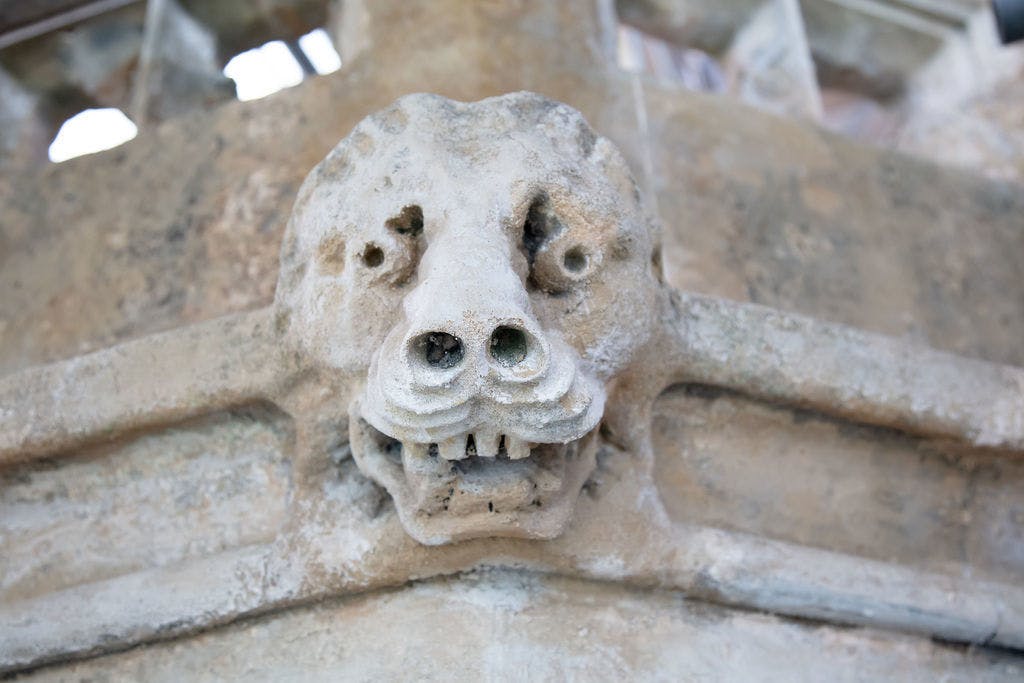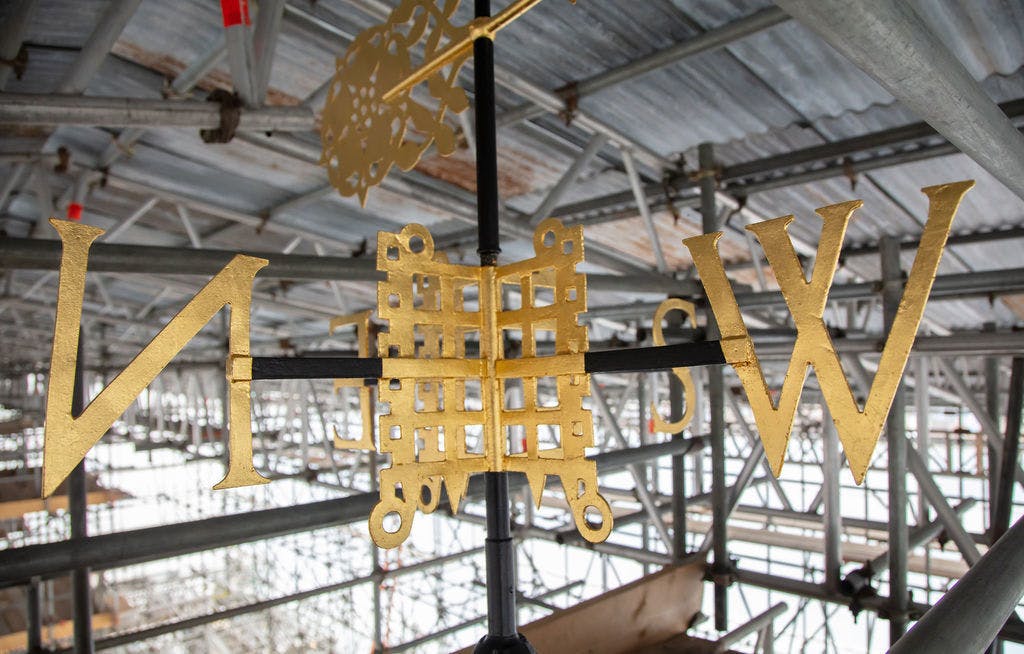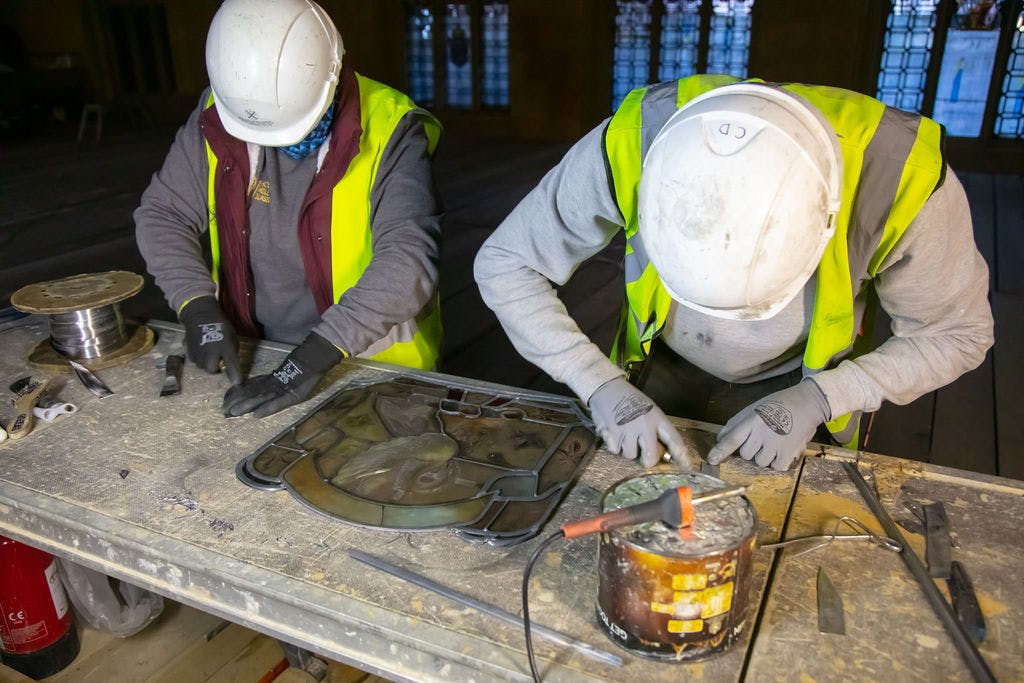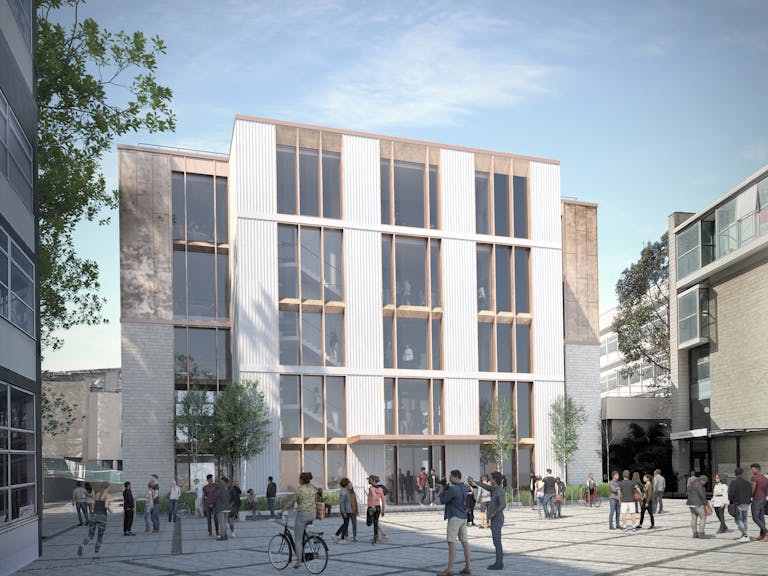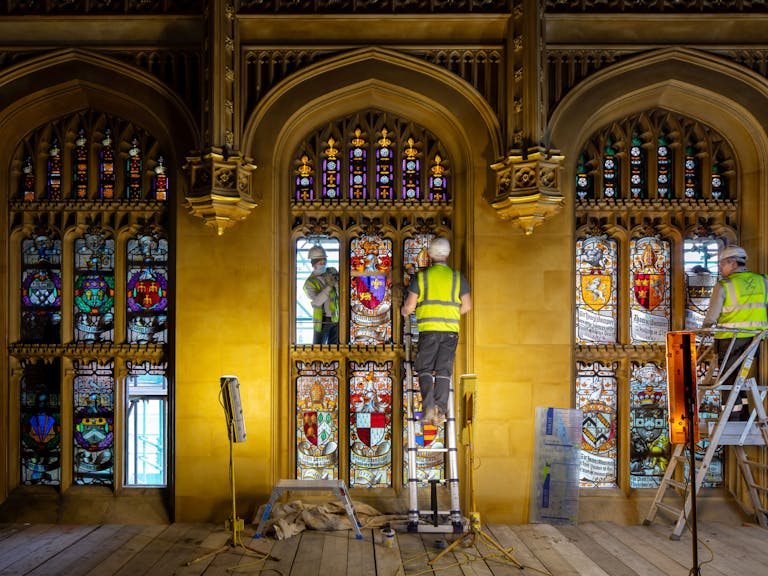Conserving Wilkins' Hall, King’s College, Cambridge
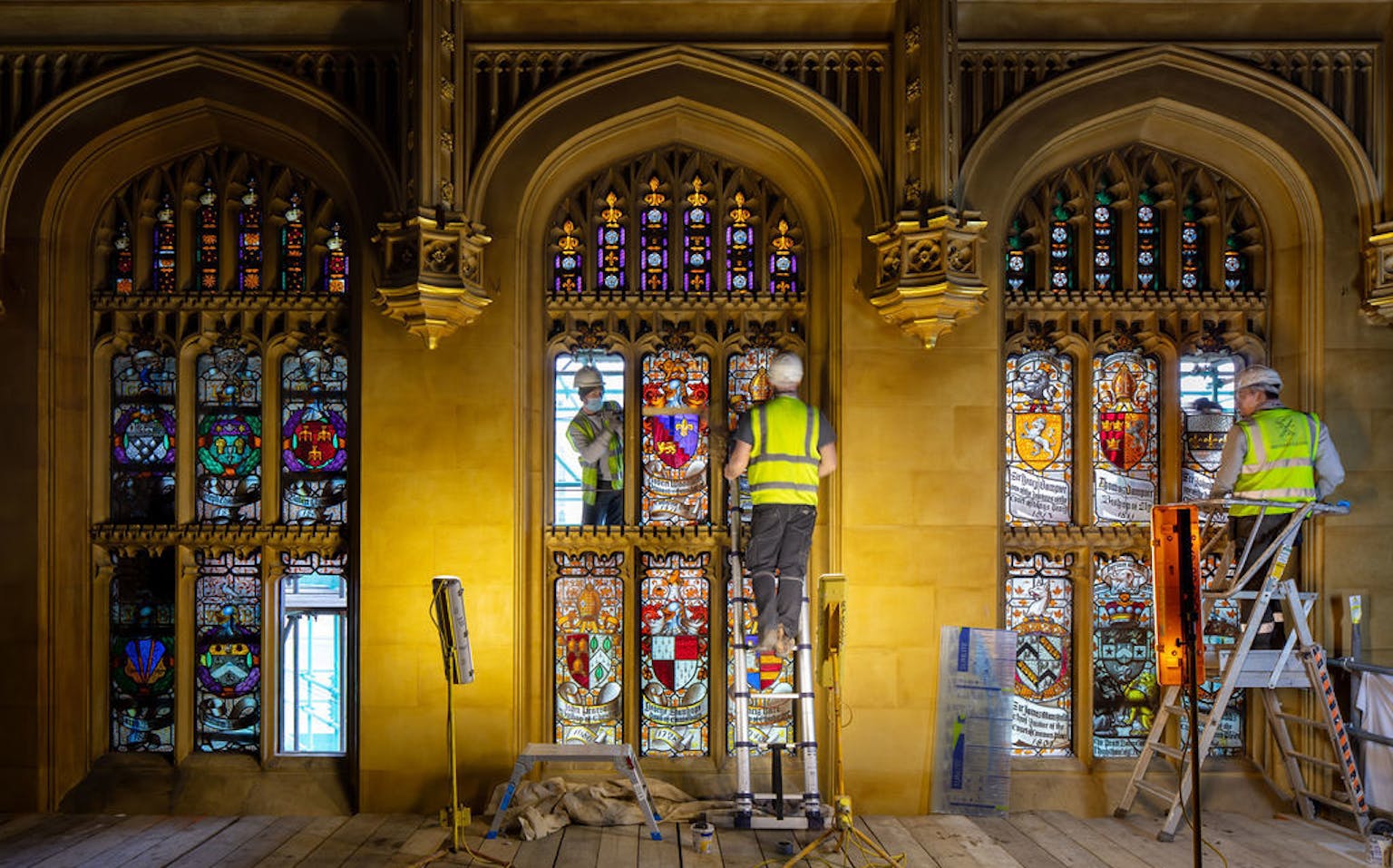
Senior Architect from Purcell’s Cambridge studio, Alasdair Jones, discusses Purcell’s recent work at Wilkins' Hall, King’s College Cambridge, where our specialist team have repaired its exterior and interior, conserving the historic site for future use.
Grade I-listed Wilkins’ Hall, facing on to Front Court at King’s College, Cambridge, forms part of a world-famous arrangement of buildings alongside King’s College Chapel, the Gibbs Building and the East Front to King’s Parade. Built between 1824 and 1828 by William Wilkins, the building is a focal point for college life, providing its main dining space, as well as the venue for numerous formal dinners and celebrations attended by members of the college and visitors alike. Beyond this, the hall provides a key part of Cambridge’s architectural landscape and has contributed to its worldwide notoriety.
Our team carried out a condition survey and feasibility study for repair works to the hall. Our report addressed the failing roofing slates, stonework repairs, replacement gutters, specialist window conservation, ceiling repairs, stone cleaning and the addition of an array of photovoltaic panels to the south-facing roof slope.
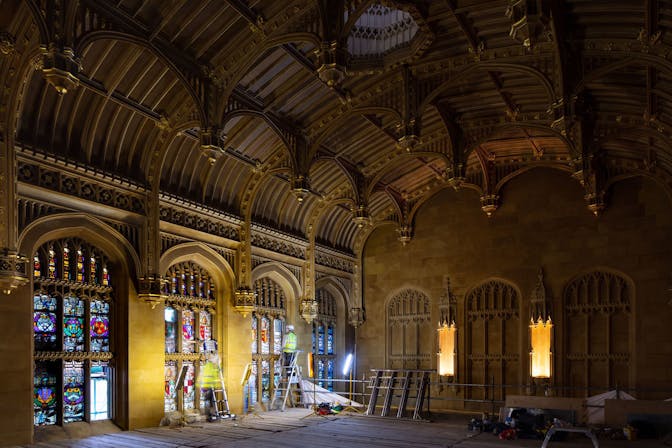
Visible only from a handful of locations within the college, the south-facing roof slope provided a rare opportunity to install energy-generating infrastructure on a grade I-listed building. Our team also oversaw the successful process of achieving planning and listed building consent in addition to producing detailed production information and construction works on site, due for completion in March 2021.

Re-roofing
Wilkins’ Hall benefits from a diminishing course Welsh slate roof, accentuating the sense of perspective to the original roof. The roofing had started to fail with slate damage on the roof directly correlating with water damage to the ceiling below. Removed slates provided evidence of at least a partial re-roofing in 1897, although many appeared to date from the original construction, far exceeding the expected lifespan of roofing slates.
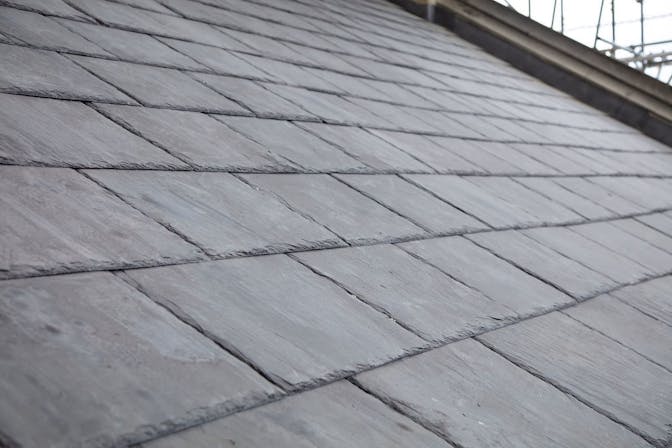
The potential for re-use of the existing slates was thoroughly investigated but their condition was found to be insufficient in providing any sort of reasonable extended life span. As such, a natural Heather Blue Slate was specified from the same Penrhyn Quarry as the original slates were extracted from. Careful recording of the existing diminishing course arrangement has allowed it to be re-established with discrete additional ventilation provided at the eaves and ridge to improve airflow across the roof void.
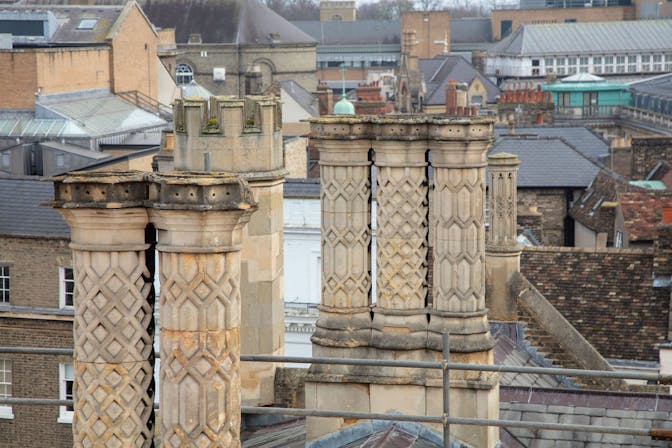
Despite being held in such high standing as to have the building named after him, William Wilkins’ design was not without its problems. Most notably, the lead-lined parapet gutters suffered from insufficient falls, excessive bay lengths (causing increased stress to the lead from thermal contraction and expansion) and minimal ventilation to the underside of the lead. A measured site survey revealed it would not be possible to re-establish the lead-lined gutters at the necessary fall and bay lengths on account of the insufficient depth available behind the parapet.
As such, our team proposed the replacement of the gutters with terne-coated stainless steel gutters, laid to a constant fall. The benefit of stainless steel is that it can be formed in singular lengths over a constant fall, removing the need for junctions and the dimensional constraints caused by steps. The flat front and rear elevations of Wilkins’ Hall naturally lent themselves to such gutters, and this approach was continued around the central bay to the front elevation.
Stone Repairs
Wilkins’ Hall displays some wonderful examples of highly decorative stone carvings, most notably on the bosses and turrets of the front elevation. Formed originally in Ketton, an oolitic limestone, the stonework had weathered to differing degrees around the building, dependent on the prevailing wind direction and the shelter afforded by adjacent buildings. Concerned to maintain as much of the original fabric as possible, our work focused on those areas where stonework had eroded to the extent of no longer being able to perform its primary function. In this respect, much of the stone repairs were focused on the parapet castellations and window hoods to ensure the remainder of the building below could continue to be protected from the elements.
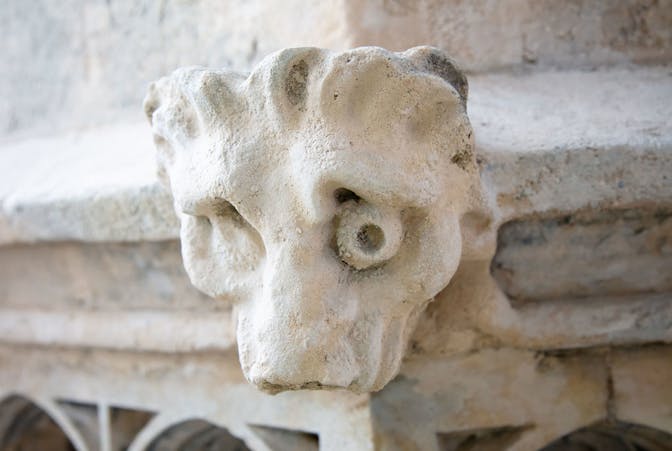
Good quality Ketton is no longer quarried which gave rise to consideration as to the best means of replacing individual stones where required. In conjunction with the project’s stonemasons, we identified Ancaster as a suitable replacement for the Ketton, both in terms of durability and appearance. Furthermore, larger original stones from the enclosed rear elevation were often able to be cut down and re-used on the more prominent front elevation, thereby helping maintain the original fabric and appearance of the building.
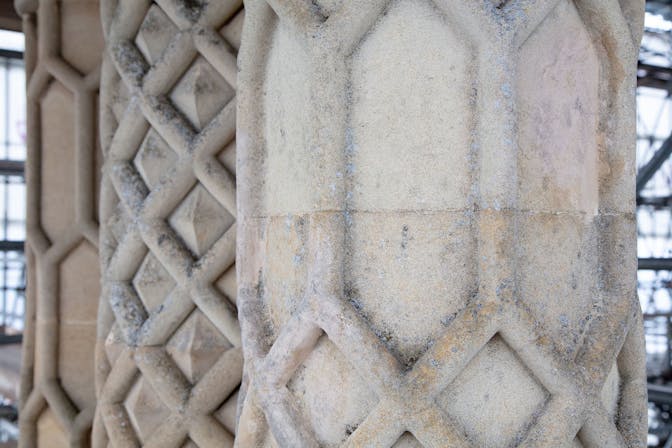
Internal Works
Purcell’s work culminated with the interior of the hall. Repairs to the ceiling and its decorations, along with specialist cleaning, allowed the magnificent ceiling to be returned to its former glory. Alongside this, specialist repair works were carried out to the stained-glass windows which dated back to the 1830s. The work consisted of both in-situ resin-repairs and temporary removal of panels for specialist workshop-based conservation. The reinstalled conserved glazing provides a magnificent illumination to the hall and will allow it to readopt its prominent position as a focal point for collegiate and civic life within the city.
